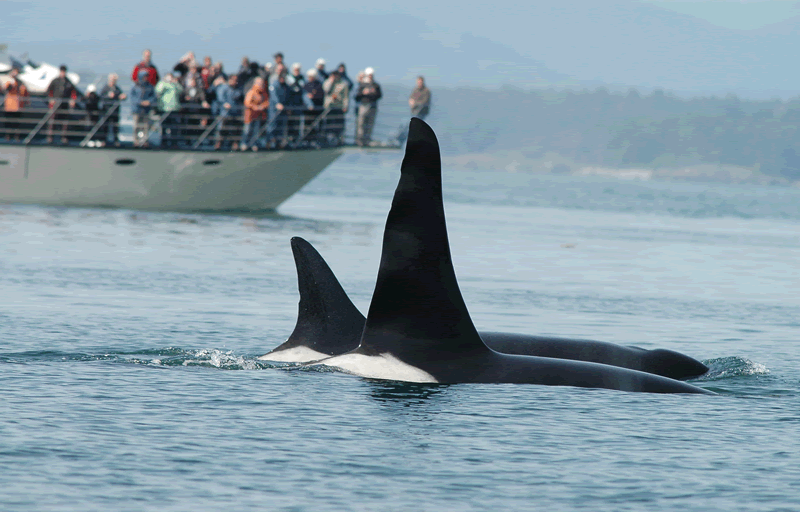— from Ken Balcomb, Center for Whale Research —
My first acquaintance with the Southern Resident killer whale designated J2 was on April 16, 1976 in Admiralty Inlet, Puget Sound.

J2 ID photograph (1976)
I remember calling Mike Bigg immediately after processing my film of the encounter to notify him that we had found a group of about a dozen whales plus a few calves including a newborn. None of them were whales that we had seen on our previous encounter on April 6 with most of the so-called southern community of these iconic “resident” killer whales. We (Camille Goebel, Rick Chandler, and I – forming a non-profit organization) were beginning our third week of a ‘Killer Whale Study in Puget Sound and Environs’ for the Seattle Marine Mammal Division of NOAA’s National Marine Fisheries Service.
I was excited to ‘discover’ any new whales that Mike did not already know. There was great controversy at the time (1976) about whether the killer whale population being ‘harvested’ for sale to marine parks and aquaria throughout the world was identifiable and finite, essentially local, or anonymous and infinite as in merely passers-by from a world ocean of these large and charismatic marine predators.

J1 and J2 (photograph by Erin Heydenreich, Center for Whale Research, 2009)
Mike Bigg was at the crux of this controversy because he had the audacity to say to the world’s most respected cetologists (whale and dolphin scientists) that he could identify each and every individual killer whale in the Pacific Northwest by the shape of its dorsal fin and the pigment pattern and scars on the ‘saddle patch’ on the back of each whale.
Forty years later, this individual whale recognition is now common knowledge, but in 1976 the validity of the individual identification technique was being argued in US Federal Court and in meetings of the International Whaling Commission. On April 17, 1976, Mike essentially proved to me that he was right when he calmly told me over the phone that the whales we had seen the day before must be J pod. He went on to precisely describe each individual:
“The largest male with a closed saddle and tall, prominent dorsal fin with a wavy trailing edge that gives a side view appearance of slight scalloping, that is J1; he is closely associated with a closed-saddle female that has a small nick halfway down on the trailing edge with a finger-size tag of tissue protruding upward from the bottom of the nick, that is J2; another large male with an open saddle and jaunty dorsal fin that bends to the left about halfway up its height, that is J3; and, another female with a closed saddle and a dorsal fin that looks like it has a human bite-size piece missing from the trailing edge near the top of the fin, that is J4; etc., until he described each whale that appeared on my film. I was humbled – the only whale I had been able to photograph that Mike hadn’t seen was a newborn calf with mother J4 – and we designated it J15.

J2 and family (photograph by Dave Ellifrit, Center for Whale Research, 2008)
We saw J2 thousands of times in forty years, and in recent years she was in the lead of J pod virtually every time that anyone saw her. In 1987 we estimated that she was at least 45 years old and was more likely to have been 76 years old (the oldest SRKW at the time, and the presumed mother of J1). And, she kept on going, like the energizer bunny. She is one of only a few “resident” whales for which we do not know the precise age because she was born long before our study began.
I last saw her on October 12, 2016, as she swam north in Haro Strait far ahead of the others.
**If you are reading theOrcasonian for free, thank your fellow islanders. If you would like to support theOrcasonian CLICK HERE to set your modestly-priced, voluntary subscription. Otherwise, no worries; we’re happy to share with you.**








